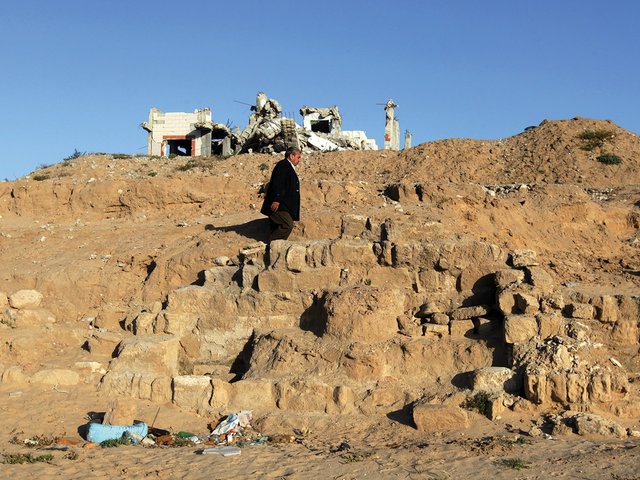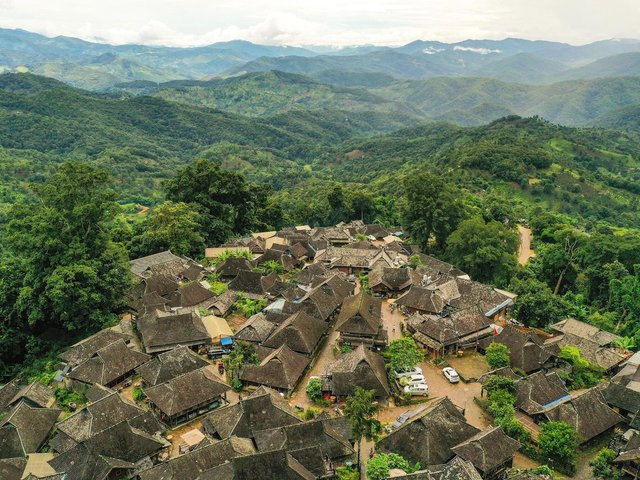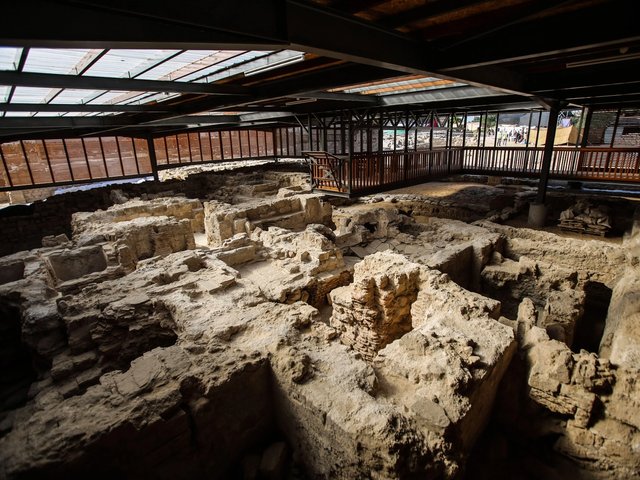The ancient Monastery of Saint Hilarion (Tell Umm Amer) in Gaza has been urgently added to Unesco’s List of World Heritage in Danger, due to threats from the ongoing war. The decision, announced during the 46th session of the Unesco World Heritage Committee in New Delhi, India, underscores the critical situation facing the historic site.
“The situation around the site has deteriorated rapidly, especially at Nuseirat Camp, which is very close. There was a lot of concern about the site so the decision was taken to go for the emergency nomination dossier,” Raymond Bondin, the world heritage expert who led the team that prepared the nomination dossier to Unesco, tells The Art Newspaper.
Dating back to the fourth century, the Monastery of Saint Hilarion had been on Unesco’s Tentative Heritage List since 2012. It is one of the oldest, largest and most complex monasteries with substantial remains in the Middle East. As the first monastic community in the Holy Land, it laid the groundwork for monastic practices in the region. The site was fast-tracked on to the World Heritage List using emergency inscription procedures.
“Contrary to all the other heritage sites [in Gaza] that have been completely destroyed this site was not touched, so this was seen as an opportunity to make sure it was further protected,” Bondin says, adding he was “relieved” and “very happy” with the decision.
In February, the Palestinian culture ministry reported that Israeli bombardments had destroyed or damaged over 200 historic and cultural sites in Gaza, including Anthedon Harbour, which was on Unesco Tentative World Heritage List. Satellite imagery reveals that Gaza’s first seaport, inhabited from 800 BC to AD 1100, has been bulldozed and completely destroyed.
Bondin is “optimistic” that this decision will pressure Israel to prevent further violations. “We all appreciate that the main effort must be humanitarian but at the same time the identity of Palestinians is extremely important to protect,” he says.
More than 39,000 Gazans have been killed since the start of the conflict, says the local health ministry, while most of the Gaza Strip's 2.3 million people have been driven from their homes. More than 1,200 Israelis were killed in the attack on 7 October 2023, according to Israeli tallies, and 253 taken hostage.
While the listing of the site has been welcomed, Unesco faces criticism for its perceived delay in acting. “I was very happy that Unesco have enlisted Saint Hilarion on the List of World Heritage in Danger, it is a step in the right direction, but it is too little too late,” says Mahmoud Hawari, an archaeology professor at Bethlehem University, West Bank, and former director general of the Palestinian Museum, Birzeit, who has consulted with Unesco on heritage sites.
Hawari is “very disappointed” that Unesco has not called for Israel to stop the war or halt the destruction of cultural sites. “[Unesco’s] reaction was very hesitant and [they were] not outraged by the destruction or the human toll of this genocide,” he says. “So, when I hear that Unesco have decided to enlist this site I think to myself where has Unesco been all these months with the destruction of over 200 archaeological and historical sites in Gaza.”
Unesco’s statement says: “Unesco expresses deep concern about the impact of the ongoing conflict on cultural heritage, particularly in the Gaza Strip.” It continues, “the organisation urges all involved parties to strictly adhere to international law, emphasising that cultural property should not be targeted or used for military purposes, as it is considered civilian infrastructure.”
Hawari emphasises that the enlistment carries “moral political significance for Palestine” and recognises that Gaza’s historic sites meet international standards. He insists that the decision must be followed by practical steps to enforce the protection of historic sites.
Hawari highlights that Palestinian heritage, which “Palestinians are very proud of,” is multicultural and includes sites from all three monotheist religions, Judaism, Christianity and Islam. “Unfortunately, this cultural heritage and civilisation is being destroyed in front of our eyes in Gaza and in the West Bank,” Hawari warns.
Founded by Saint Hilarion, a native of the region, the monastery was a key station at the crossroads of Egypt, Palestine, Syria and Mesopotamia. It features two churches, a burial site, a baptism hall, a public cemetery, an audience hall and dining rooms. The monastery was damaged and abandoned in the early seventh century, remaining hidden until it was rediscovered by local archaeologists in 1999.
Recent conservation projects funded by the Swiss based foundation Aliph and the British Council, led by Première Urgence Internationale (PUI), have focused on protecting and restoring the site.
In December, Unesco granted the site enhanced protection—the highest level of immunity against attacks established by the 1954 Hague Convention and its Second Protocol.
With the addition of Monastery of Saint Hilarion, the State of Palestine now has five properties inscribed on Unesco’s World Heritage List. Inclusion on the list allows for enhanced international technical and financial assistance to protect and rehabilitate the property.





